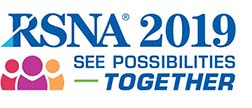

ParticipantsSteven S. Raman, MD, Santa Monica, CA (Presenter) Consultant, Johnson & Johnson; Consultant, Bayer AG; Consultant, Merck & Co, Inc; Consultant, Amgen Inc; Consultant, Profound Medical Inc
Aytekin Oto, MD, Chicago, IL (Abstract Co-Author) Research Grant, Koninklijke Philips NV; Research Grant, Guerbet SA; Research Grant, Profound Medical Inc; Medical Advisory Board, Profound Medical Inc; Consultant, IBM Corporation; Founder and co-owner, QMIS TBS Capital Group Corp
Katarzyna J. Macura, MD,PhD, Catonsville , MD (Abstract Co-Author) Author with royalties, Reed Elsevier; Research Grant, Profound Medical Inc; Research Grant, GlaxoSmithKline plc; Research Grant, Siemens AG
Sandeep S. Arora, MBBS, Nashville, TN (Abstract Co-Author) Speaker, Profound Medical Inc Researcher, Profound Medical Inc
Temel Tirkes, MD, Indianapolis, IN (Abstract Co-Author) Nothing to Disclose
Jurgen J. Futterer, MD, PhD, Nijmegen, Netherlands (Abstract Co-Author) Research Grant, Siemens AG
Daniel N. Costa, MD, Dallas, TX (Abstract Co-Author) Nothing to Disclose
David Bonekamp, MD, PhD, Heidelberg, Germany (Abstract Co-Author) Speaker, Profound Medical Inc
Masoom A. Haider, MD, Toronto, ON (Abstract Co-Author) Nothing to Disclose
Derek W. Cool, MD,PhD, London, ON (Abstract Co-Author) Nothing to Disclose
Carlos Nicolau, MD, Barcelona, Spain (Abstract Co-Author) Nothing to Disclose
Thorsten Persigehl, MD, Koeln, Germany (Abstract Co-Author) Nothing to Disclose
Kiran R. Nandalur, MD, Bloomfield Hills, MI (Abstract Co-Author) Nothing to Disclose
Robert Staruch, Mississauga, ON (Abstract Co-Author) Employee, Profound Medical Inc
Mathieu Burtnyk, DIPLPHYS, Toronto, ON (Abstract Co-Author) Employee, Profound Medical Inc
Marc Serrallach, Barcelona, Spain (Abstract Co-Author) Nothing to Disclose
Gregory Zagaja, Chicago, IL (Abstract Co-Author) Nothing to Disclose
Gencay Hatiboglu, Heidelberg, Germany (Abstract Co-Author) Nothing to Disclose
James D. Relle, MD, West Bloomfield, MI (Abstract Co-Author) Nothing to Disclose
Allan Pantuck, MD, Los Angeles, CA (Abstract Co-Author) Nothing to Disclose
Yair Lotan, MD, Dallas, TX (Abstract Co-Author) Nothing to Disclose
Axel Heidenreich, Cologne, Germany (Abstract Co-Author) Nothing to Disclose
Michiel Sedelaar, MD, PhD, Nijmegen, Netherlands (Abstract Co-Author) Nothing to Disclose
Joseph Chin, MD, London, ON (Abstract Co-Author) Nothing to Disclose
Michael Koch, Bloomington, IN (Abstract Co-Author) Nothing to Disclose
Christian Pavlovich, MD, Baltimore, MD (Abstract Co-Author) Nothing to Disclose
David Penson, MD, Nashville, TN (Abstract Co-Author) Nothing to Disclose
Laurence Klotz, Toronto, ON (Abstract Co-Author) Nothing to Disclose
Scott Eggener, Chicago, IL (Abstract Co-Author) Nothing to Disclose
SRaman@mednet.ucla.edu
PURPOSEMRI-guided transurethral ultrasound ablation (TULSA) is an incision-free method for customized prostate ablation using directional ultrasound under MRI thermometry feedback control. We report 12-month (12mo) outcomes from the TULSA-PRO Ablation Clinical Trial (TACT) Pivotal study.
METHOD AND MATERIALSTACT enrolled 115 men with localized prostate cancer at 13 sites. Treatment intent was whole-gland ablation sparing the urethra and urinary sphincter. Primary endpoints were adverse events and proportion of men with PSA reduction >=75%. Secondary endpoints included 12mo 10-core biopsy, mpMRI, prostate volume reduction, and quality of life.
RESULTSMedian (IQR) age was 65 (59-69) years and PSA 6.3 (4.6-7.9) ng/ml. Pre-treatment, 72/115 (63%) men had Grade Group 2 (GG2) disease. PI-RADSv2 score >=3 lesions were present in 98/115 (85%) men, >=4 in 77 (67%). Ablation times were 51 (39-66) min for targeted prostate volumes of 40 (32-50) cc. MRI thermometry during treatment indicated 98% (95-99%) thermal coverage with ablation precision of ±1.4 mm, confirmed qualitatively by post-treatment CE-MRI. Grade 3 adverse events occurred in 8% of men (all resolved), with no rectal injuries or Grade >=4 events. At 12mo, 1% of men were incontinent (>1 pad/day), and 69/92 (75%) maintained erections sufficient for penetration (IIEF Q2 >=2). PSA reduction >=75% was achieved in 110/115 (96%), with median reduction of 95% and nadir of 0.34 ng/ml. Median perfused prostate volume decreased from 41 to 4 cc at 12mo MRI. Of 68 men with baseline GG2 disease, 54 (79%) were free of GG2 on 12mo biopsy. Overall, 72/111 (65%) had no evidence of any cancer. Of 98 men with PI-RADSv2 >=3 at baseline, 26 had MRI lesions at 12mo, 11/26 with biopsy-confirmed GG2 (negative predictive value, NPV 93%). Multivariate predictors of residual GG2 included intraprostatic calcifications at screening, MRI thermal coverage of target volume, and PI-RADSv2 >=3 at 12mo (p<0.05).
CONCLUSIONThe TACT Pivotal study of MRI-guided TULSA for whole-gland ablation in men with localized prostate cancer met its primary PSA endpoint in 96% of patients, with low rates of severe toxicity and residual GG2 disease. MRI at 12mo detected residual disease with NPV of 93%.
CLINICAL RELEVANCE/APPLICATIONWhole-gland ablation using MRI-guided TULSA achieves predictable PSA and prostate volume reduction. Multiparametric MRI is promising for post-TULSA follow-up.